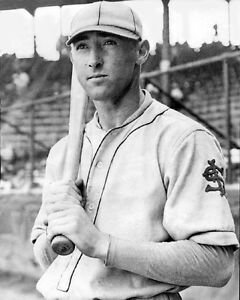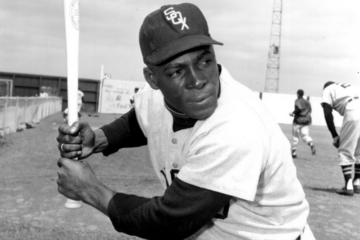The Hall of Fame Index: Who is the least qualified left fielder in the Hall of Fame?

One of the peculiarities of Hall of Fame analysis is sorting through the various concepts of value. The traditional concept has fielding and hitting as equal parts of a player’s value. So, a player that wins numerous Gold Gloves at a position is theoretically as valuable as a player that wins as many silver sluggers. Of course, we know that is literally not true. Offense is always more valuable than fielding, but even that statement by itself is a gross simplification.
The fact is that it depends on the position and this is the main reason why I always break down each position individually. Even complex fielding statistics often compare players to the average at that position. The trouble is that value is dependent on the range between the very good and the very bad. Simply put, the number of runs a really good left fielder saves you is not nearly as much as a really good shortstop or really good catcher. In fact, there is a well-established hierarchy of value in the defensive positions.
C – SS – 2B – CF – 3B – RF – LF – 1B
This fact changes how we evaluate each position. We spend a great deal of time focusing on fielding for shortstops and catchers and rightfully so. An Alex Gordon or Brett Gardner (who appear prominently in the Hall of Fame Index Part II) have dominated the position defensively for the past decade, but they haven’t contributed as much to their overall value as you might think. So, that puts the focus more on hitting.
Career Value
| BWAR | FWAR | WS/5 | Total | |
| Fred Clarke | 67.8 | 72.8 | 80.0 | 220.6 |
| Ed Delahanty | 69.6 | 73.7 | 71.0 | 214.3 |
| Jesse Burkett | 59.7 | 66.6 | 77.8 | 204.1 |
| Goose Goslin | 66.2 | 64.0 | 71.0 | 201.2 |
| Zack Wheat | 60.1 | 63.1 | 76.0 | 199.2 |
| Joe Kelley | 50.5 | 54.9 | 61.0 | 166.4 |
| Jim O’Rourke | 52.2 | 52.1 | 61.0 | 165.3 |
| Heinie Manush | 47.2 | 43.1 | 57.0 | 147.3 |
| Chick Hafey | 31.1 | 32.7 | 37.2 | 101.0 |
For those that haven’t been following this series, we are looking for the least qualified Hall of Famers, since that is something I neglected to do in the book. If you follow this series, it can be an excellent companion to the book itself. It only cost 5.99 if you go with the electronic version. Veterans Committee selections could be broken into three categories. The first category are the 19th century and early 20th century players that the BBWAA simply couldn’t get to. Most of the top players at each position come from this category. When the voting began in the 1930s, most of the journalists had never seen a Jesse Burkett or Ed Delahanty. Some may have seen Clarke, but those would few and far between.
The second group would be players like Goslin and Wheat that simply fell through the cracks. They were legitimately great players, but there may have been a glut of them in that time period or their greatness was not recognized at the time. However, the index and other statistical measures demonstrate their fitness consistently.
The last group are the players that range somewhere between debatable and deplorable. That’s everyone else not mentioned to date at this position. Some are 19th century guys that the committee just whiffed on. Others are buddies that may have been good, but they were never really great or their careers were too short. Obviously, right off the bat it looks like Hafey takes the cake. The gap is pretty significant, so all that is left is to figure out why.
Peak Value
| BWAR | FWAR | WS/5 | Total | Index | |
| Delahanty | 63.1 | 66.2 | 58.4 | 187.7 | 402.0 |
| Burkett | 45.3 | 51.9 | 56.2 | 153.4 | 357.5 |
| Goslin | 52.6 | 51.6 | 51.0 | 155.2 | 356.4 |
| Clarke | 41.1 | 44.8 | 49.4 | 135.3 | 355.9 |
| Wheat | 40.3 | 41.8 | 48.0 | 129.8 | 328.0 |
| Kelley | 45.4 | 48.8 | 47.8 | 142.0 | 308.4 |
| Manush | 40.4 | 36.5 | 48.0 | 124.9 | 272.2 |
| O’Rourke | 26.9 | 28.5 | 38.2 | 93.6 | 258.9 |
| Hafey | 31.4 | 32.6 | 34.8 | 98.8 | 199.8 |
In past articles, I have referred to 300 index wins as a kind of floating standard. It’s more a guideline as each position establishes its own standard based on how the data breaks down. If we treat 300 as the standard then the bottom three obviously stick out. The whole goal of the index was to create that kind of separation. There is a very definite gap between Kelley and Manush. Since Manush is a 20th century player we can easily evaluate him using traditional means.
O’Rourke presents a unique problem. He didn’t play in 100 or more games until he was 33 years old. That wasn’t a problem of injuries. It was a problem of the schedule in those early years. Those leagues didn’t play in enough games for a player to be valuable. We will see it this year if players play at all. If the season is reduced to 80 games you will not see seven and eight win players. A player that reaches four wins will be a potential MVP candidate. If we evaluate O’Rouke in that prism we might be inclined to overlook his lower peak value tally.
As for Hafey, you can clearly see he is the least qualified and the comparison between career and peak value tells you why. He did not enjoy a long career. So, he marries the sins of not being particularly valuable when he was at his best with not enjoying the fruits of a long career. The combination has him trailing even O’Rourke and Manush by wide margins. Hafey was clearly elected into the Hall of Fame under the buddy system.
Offensive Numbers
| OPS+ | Rbaser | OW% | wOBA | |
| Delahanty | 152 | 0 | .758 | .428 |
| Burkett | 140 | -28 | .727 | .411 |
| O’Rourke | 134 | -5 | .666 | .360 |
| Clarke | 133 | -1 | .682 | .390 |
| Hafey | 133 | 7 | .683 | .402 |
| Kelley | 133 | 1 | .699 | .405 |
| Wheat | 129 | -6 | .684 | .384 |
| Goslin | 128 | 11 | .665 | .402 |
| Manush | 121 | 16 | .644 | .389 |
Value is a fluid thing. One of the biggest problems with the BBWAA and the Veterans Committee is that they have a static view of value and that is particularly true offensively. If you hit .300 or hit 30 home runs then you are valuable. If you do both then you are really valuable. The problem is that value comes in the comparison between two players. How many players in that era hit .300? How many hit 30 home runs? That changes throughout time, so the above numbers hope to level the playing field some.
The index not only combines elements of fielding and hitting, but it also considers the element of time. How long did the player do this for? At first blush, Hafey looks fine. His numbers are in line with everyone else. When we consider the fact that he realty only did it for 10 or 11 seasons then we suddenly change our view of him and his candidacy.
Fielding Numbers
| Rfield | DWAR | TZOF | DWS/5 | |
| Clarke | 91 | -2.8 | 94 | 12.9 |
| Wheat | 54 | -6.9 | 54 | 11.6 |
| Goslin | 50 | -4.7 | 50 | 10.0 |
| Delahanty | 20 | -5.4 | 61 | 8.5 |
| Kelley | 18 | -7.4 | 20 | 10.4 |
| Manush | -1 | -7.7 | -1 | 7.8 |
| Burkett | -4 | -12.3 | -4 | 10.6 |
| Hafey | -8 | -5.6 | -8 | 4.8 |
| O’Rourke | -30 | -9.6 | 3 | 9.2 |
Fielding numbers create two very distinctive answers to the fielding question. Who was the best fielding left fielder? Well, that answer would clearly be Fred Clarke (at least amongst this group). How much more valuable was he than the others? This is an entirely different question and it comes into more focus when we look at DWAR and defensive win shares. The answer is not that much in comparison with the other guys.
That’s a multi-tiered answer to a difficult question. Yes, a player may be superior at a particular skill, but how much is that skill worth? Even answering that question is more complex than you might think. The skill of throwing out base runners depends not only on the environment you are playing in, but also the time period you are playing in. Throwing someone out from the Green Monster is a lot easier than throwing someone out from the power alley in Death Valley (old Yankee Stadium).
BWAR MVP Tests
| Top 10 | Top 5 | MVP | Points | |
| Delahanty | 0 | 6 | 3 | 60 |
| Clarke | 5 | 3 | 0 | 30 |
| Goslin | 3 | 4 | 0 | 29 |
| Burkett | 3 | 3 | 0 | 24 |
| Wheat | 3 | 3 | 0 | 24 |
| O’Rourke | 6 | 1 | 0 | 23 |
| Kelley | 1 | 3 | 0 | 18 |
| Manush | 2 | 1 | 0 | 11 |
| Hafey | 2 | 0 | 0 | 6 |
BWAR MVP points answer a different question than the index. It helps demonstrate in simple numerical terms how your value was distributed. We have no way of knowing in this chart whether you finished 11th or 100th in seasons where you did not register. Of course, we could look it up if we really wanted to, but the goal is not to answer every question in each test, but to combine all of the tests to answer as many questions as possible.
When we combine all of the tests we see that Heinie Manush probably isn’t fit for Cooperstown. He wasn’t a particularly egregious selection, but he is an example of what happens when we answer the wrong question. We shouldn’t ask whether he should be a Hall of Famer. We should ask if he is the most fit? If you look at this article and read the book you will see the answer is clearly no.
When you finish at or near the bottom on every test then you are clearly unfit. Hafey couldn’t even break the top five in his league in any season. Then, he couldn’t maintain his career beyond ten or eleven seasons. If he were Mike Trout like in those eleven seasons then he would have a compelling case. He didn’t and he doesn’t.



